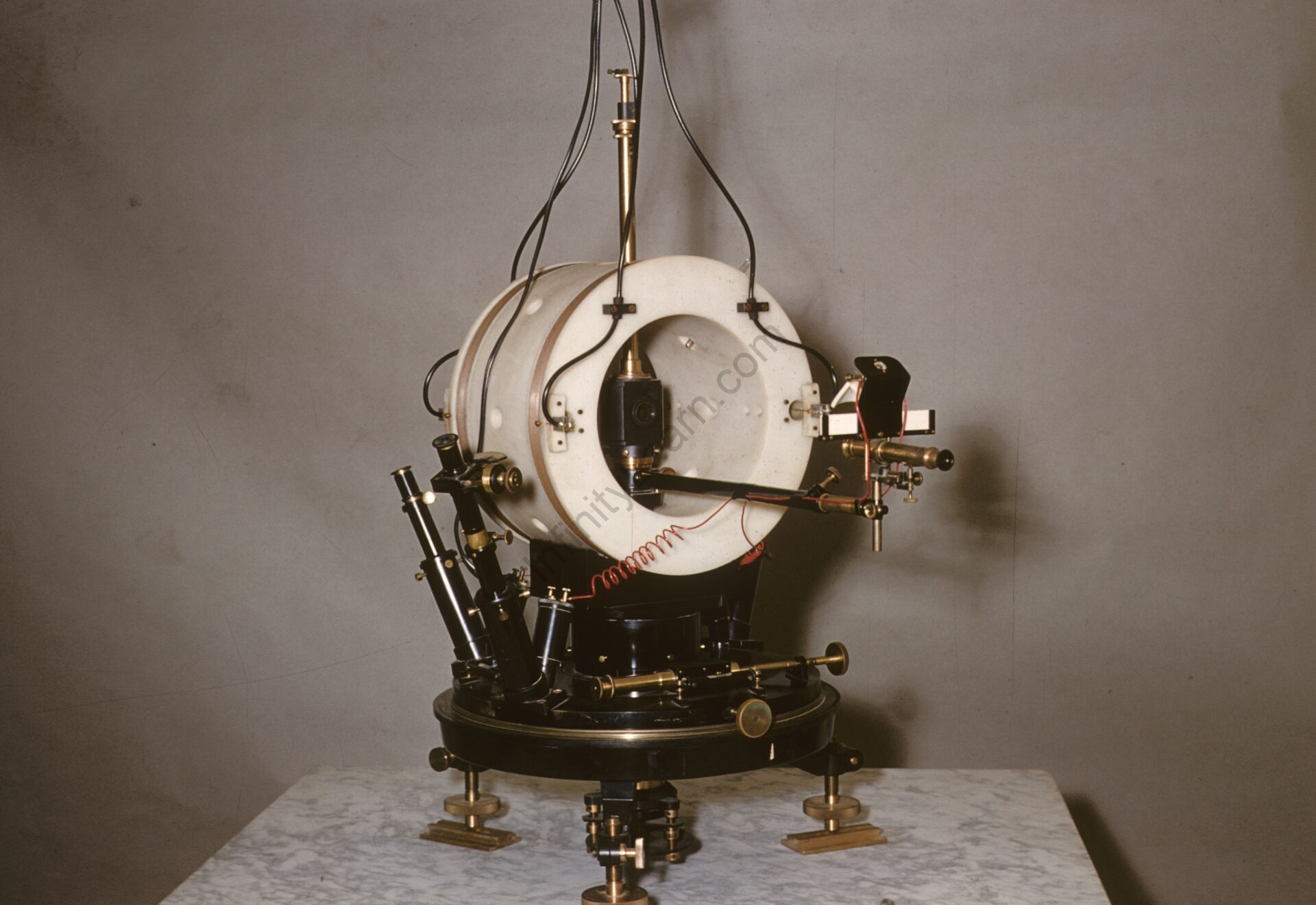Table of Contents

A moving coil galvanometer is a device that is used to measure electric currents. It’s an extraordinarily sensitive electromagnetic device that can detect currents as low as a few microamperes.
Moving-coil galvanometers are divided into two categories:
A galvanometer with suspended coils and a Weston galvanometer or a galvanometer with a pivoting coil
Principle of a Moving Coil Galvanometer
Magnetic torque occurs when a current-carrying coil is placed in an external magnetic field. The angle at which the coil is deflected due to the magnetic torque effect is proportional to the coil’s current magnitude.
Construction of a Moving Coil Galvanometer
The moving coil galvanometer is made consisting of a rectangular coil with several turns that are wound on a metallic frame and is usually constructed of thinly insulated or fine copper wire.
The coil can freely revolve due to a fixed axis. The coil is suspended in a uniform radial magnetic field by a phosphor-bronze strip connected to an adjustable torsion head.
The coil must be suspended in a material that is both conductive and has a low torsional constant.
To boost the magnetic field’s intensity and make it radial, a cylindrical soft iron core is symmetrically placed inside the coil. The coil’s lower half is connected to a limited number of turns phosphor-bronze spring.
Binding screws are used to connect the spring’s other end.
The spring generates a counter torque that balances the magnetic torque and produces a consistent angular deflection. A plane mirror attached to the suspension wire, as well as a lamp and scale setup, are used to measure the coil’s deflection. The scale’s zero point is in the middle.
Ammeter vs. Galvanometer: What’s the Difference?
The galvanometer deflects the flow of current with the help of a moving coil that rotates between permanent magnets and deflects with the flow of current. By connecting a resistance in the electric circuit in parallel, a galvanometer can be converted to an ammeter. When resistance is placed in series with it, it can be used as a voltmeter.
The ammeter is a device that is used to determine the magnitude of the current. Because ampere is the unit of current, it’s also known as an ampere metre.
Ammeter
- It’s a tool for determining the amount of current flowing in a circuit.
- It functions in the presence or absence of a magnetic field.
- It can detect both alternating and direct currents.
- It has a lower sensitivity.
- It is more precise.
- It could be an electronic or mechanical device.
- It’s a component of an electrical circuit.
Galvanometer
- It’s a gadget that detects the strength and direction of a little current in a circuit.
- It works because there’s a magnetic field present.
- It solely measures direct current; it is more sensitive; yet, it is less precise.
- It’s a mechanical contraption.
- It’s a component in bridges and potentiometers.
Uses of a Galvanometer
The primary purpose of a galvanometer is to measure electric current. Other uses include:
- Galvanometers are used in schools and colleges for current measurement and to learn about the basic functioning principles of measuring instruments. A galvanometer is also useful for determining the direction of current flow.
- Galvanometers are employed in modern autos and heavy mechanical engineering for positioning and control systems.
- Galvanometers are employed in a variety of metres, including VU metres, light metres, and so on.
- With the use of shunt and series resistance, a galvanometer can be utilised as both an ammeter and a voltmeter.
FAQs
In a galvanometer, what is the NAB/K?
For a given galvanometer, the number nAB / k is a constant. As a result, the galvanometer's deflection is directly proportional to the current flowing through it.
What does a moving coil galvanometer's sensitivity mean?
The ratio of change in deflection of the galvanometer to change in current in the coil is the broad definition of sensitivity experienced by a moving coil galvanometer. If a galvanometer shows a larger deflection for a modest amount of current, it has a higher sensitivity.





